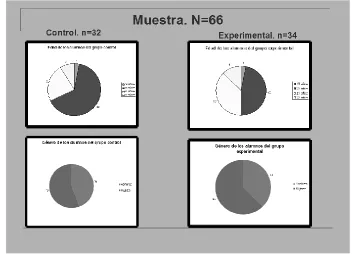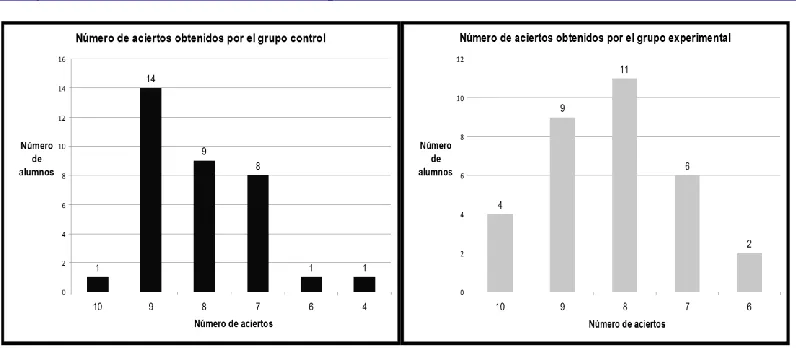The Use Of Analogies As A Methodology
In The School Of Medicine
José Luis Jiménez Corona, Universidad Nacional Autónoma de México, México Isabel Mª Ferrándiz Vindel, University of Castilla-La Mancha, Spain
ABSTRACT
In recent years, the School of Medicine of the National Autonomous University of Mexico has been largely engaged in the global medical education trend, through the implementation of curriculum changes which include new methods of teaching and learning. These "new" methods seek to change from the use of teacher-centered strategies or traditional ones, to the student-centered strategies or innovating ones.
The fulfillment of this study is due to the need to find educative strategies which help improve our students’ learning in a clinical subject which is taught in the basic sciences cycle (this cycle comprises the first and second year of the degree), allowing the interrelation between basic sciences and clinical sciences subjects.
Keywords: Analogies; Higher Education; Student-centered Strategies
1. INTRODUCTION
n recent years of higher education, we have seen numerous changes due to the forced advancement in the university reality. Thus, the faculty, students, etc. are making an exhaustive and precise effort to be involved in this new way of understanding university education.
The European Higher Education Area encourages students to play a central and leading role; they are considered active and participating partners. Participation is understood as a civic competence, it must be the educational content learned by the students when they go through the university with the goal of becoming active, engaged and responsible citizens for the society (Michavila, 2008, 1)
One of the changes of this modification process is the awareness of the importance of paying attention to the teaching-learning process. To make the faculty and students participate in a more committed way during the process. This will be possible depending on the extent to which they know, interpret and interiorize the new curriculum proposals framed in the integrated professional competencies model and the extent to which they are capable of transferring the knowledge acquired.
Lobato (2006) defines transference as the generalization of learning, which can also be understood as the influence of previous activities of the students in their activities in new situations. Transference takes place if the two representations are identical, if they are superposed or if one can draw a line that relates the characteristics of both representations.
On the other hand, according to cognitive psychology, transference is the use of a concept leaned in a context to solve a problem in a different context. (Norman, 2009).
Billing (2007), mentions several situations, through which, transference can be encouraged:
When learning occurs through cooperative means, and is complemented with feedback on the performance and examples.
If the learner is shown how problems are similar to one another If they are aware of how to apply their abilities in different contexts
If attention is directed to the subjacent goal structure of comparable problems
If the examples are varied and accompanied by rules or principles (especially if discovered by learners). If self-explanations by learners are stimulated.
In recent years, The School of Medicine of UNAM, has been widely involved in the global tendency of medical education through the implementation of changes in the curriculum that encompass new teaching and learning methods (UNAM School of Medicine, 2010). These new methods for the School of Medicine aim to get from the use of teacher-centered or traditional strategies to student-centered or innovative strategies. One of the requirements to implement changes in the curriculum is that they must be accompanied by research and evaluation studies, which will give additional information to guarantee the application of those changes.
In the School of Medicine there are various pieces of relevant information about the diagnosis by the Honorable Technical Board on the revision and evaluation commissions, on the analysis of the students’ performance, and on the recommendations, observations and suggestions from external organs of evaluation and accreditation:
“The academic performance of the students that enter the school is not related with their previous academic history, especially when they in the basic area. One of the main causes is the lack of studying techniques that are consistent with the increased academic demand that the degree requires.
The lack of integration and the excessive contents of the different subjects are an obstacle for effective learning.
Low terminal efficiency in the curriculum years”. (School of Medicine, UNAM, 2009, 2010).
Thus, proposing student-centered strategies for the second year students of the School of Medicine, when they are studying Surgery I, will bring:
1. An optimization of the present conditions, in which, the current Curriculum is developed, focusing on the teaching strategies that are student-centered.
2. The opportunity to work on an innovative proposal of teaching strategies.
3. The possibility of a curricular evaluation of students and also works to strategically plan with a proposal of student-centered teaching strategies.
2. METHODOLOGY
The reason to run this study is the need to look for education strategies that help to improve the students’
learning in the School of Medicine of the UNAM, in the context of a clinical subject, which is taught in the cycle of basic sciences, which comprises the first and second years of the degree, and may contribute to the integration of basic sciences with clinical sciences, the latter being studied in the period between the third and sixth years of the degree.
Surgery is studied in the second academic course of the Degree in Medicine, said subject lasts 160 hours and is divided in 80 hours of theory and 80 hours of practice, the courses go from August to May of the following year, they receive 900 students every year and the groups have an average of 30 students.
The sample was comprised by 66 students of the second year of the School of Medicine who studied Surgery 1. [See Figure 1].
Both study groups, the control group and the experimental group have shown similar characteristics, i.e.:
Two groups of regular second year students of the degree in medicine, They share a similar base of knowledge and
They are 19 to 22 years old.
Figure 1: Characteristics of the sample including age and gender of the students in both study groups
The grade with which the students enrolled in the surgery course was considered a strange variable. At the School of Medicine, students are enrolled to the next course in relation to the grade they obtained in the previous course, in this case, both study groups are enrolled in the second year of the degree, as for the average grade with which they enrolled, the control group got 8.2 and the experimental group got 7.6.
The final evaluation was done with a couple of clinical cases with multiple choice questions placed in the Moodle (Modular Object Oriented Dynamic Learning Environment) platform on the same day and at the same time and place for both groups.
3. RESULTS
None of the 66 students distributed in both study groups got 50 correct answers, a grade equivalent to 10, or failed the exam (with 30 correct answers).
Figure 2: Number of correct answers obtained by the control group Number of correct answers obtained by the experimental group
(Own elaboration)
With the results obtained we started to analyze each answer pedagogically to now if the difference that was found, although small, could give us information to know if the election of the methodology used can be applicable for this kind of students.
If we analyze the results, we can observe that the curve obtained with the experimental method is radically different to the one obtained with the traditional method. The results are more positive in the experimental group. This can make us think that the use of student-centered methodologies can favor a better academic performance in Higher Education.
4. CONCLUSIONS
The use of analogies can promote the transference of knowledge (Norman, 2009). However, it’s necessary to continue studying if only this methodology has facilitated the transference of knowledge, or the use of other kind of strategies such as the reduction of the number of students per group, taking clinical cases to practice, tutoring the teaching-learning process…
With this work we have aimed to prove that the tendency to select and prefer strategies that promote the transference of knowledge, is conscious on the part of university professors and that it serves, above all, the need to find methodologies that promote and give the best results for the transference of knowledge.
We also recommend (Garbanzo, 2007) as a research proposal.
Following Garbanzo, 2007 this study has provided very valuable information on the dynamics and operation of courses in Higher Education, to orient and act in a multifactorial way when it’s time to evaluate the academic performance, and not only with the results of the global exams “imposed-proposed” by the central coordination of the department.
These are some of the pedagogical results that we can share after the tutoring sessions we held with the participating students:
- Observing the process of teaching-learning that takes place at the School of Medicine more closely. - To orient about the values, qualities and competencies that are the most appreciated or rejected in the
classroom, depending on the contents that are part of the program of the subject.
After this study, we have proved that some of the university students in the School of Medicine have acquired the ability to select when to use certain methodological strategies and what they are good for.
AUTHOR INFORMATION
Jose Luis Jiménez Corona, MD School of Medicine of the National Autonomous University of Mexico. Academic in the Surgery Department. School of Medicine of the National Autonomous University of Mexico. Research Interest: Medical education and knowledge transfer. E-mail: quiron_jimenez@yahoo.com
Isabel Mª Ferrándiz Vindel, Ph.D. and Degree in Education Sciences by Complutense University of Madrid (UCM), Spain. Professor in the Pedagogy Department. School of Education Sciences and Humanities of Cuenca. University of Castilla-La Mancha (Spain). Research Interest: inclusive education of disabled people. E-mail: Isabel.Ferrandiz@uclm.es (Corresponding author)
REFERENCES
1. Artavia Granados, J. M. (2005). Interacciones personales entre docentes y estudiantes en el proceso de enseñanza y aprendizaje. Revista Electrónica “Actualidades investigativas en Educación”, Julio-Diciembre, 1-19
2. Asociación Nacional de Universidades e Instituciones de Educación Superior (2000). La Educación Superior en el siglo XXI. Líneas estratégicas de desarrollo. México, D.F: Asociación Nacional de Universidades e Instituciones de Educación Superior.
3. Billing, D. (2007). Teaching for transfer of core/key skills in higher education: Cognitive skills. Higher Education, 53, 483–516.
4. Facultad de Medicina de la UNAM (2009). Informe de actividades. Descargado el 4 de octubre de 2010 de http://www.facmed.unam.mx/marco/index.php?dir_ver=108
5. Facultad de Medicina (2010). Plan de Estudios 2010 y Programas Académicos de la Licenciatura de Médico Cirujano. http://www.facmed.unam.mx/marco/index.php?dir_ver=16
6. Lobato, J. (2006). Alternative Perspectives on the Transfer of Learning: History, Issues, and Challenges for Future Research. The Journal of the Learning Sciencies, 15, 431–449.
7. Garbanzo, G. (2007). Factores asociados al rendimiento académico en estudiantes universitarios, una reflexión desde la calidad de la educación superior pública. Revista Educación, 31, 43-63.
8. García, G. (1987). Años críticos: La UNAM, 1968-1987. México. D.F: UNAM, Coordinación de Difusión Cultural.
9. Norman, G. (2009). Teaching Basic science to optimize transfer. Medical Teacher, 31, 807-811.
10. Perkins, D.N. y Salomon, G. (1994). Transfer of learning. The International Encyclopaedia of Education
(vol. 11). Oxford: Elsevier/Pergamon.

